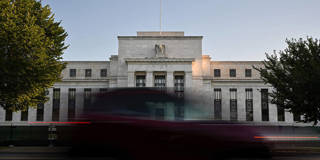The strengthening US dollar and rising borrowing costs have left developing and emerging-market countries between a rock and a hard place. To insulate their economies from the greenback’s hegemony, policymakers must shed their illusions about international cooperation and impose constraints on cross-border capital flows.
PROVIDENCE – The US Federal Reserve’s aggressive monetary-tightening campaign has squeezed economies worldwide, particularly in the developing world. With the dollar appreciating sharply against their currencies, many emerging and developing economies have experienced rapid increases in borrowing costs and consumer prices, leaving local policymakers with little choice but to raise interest rates and imperil their fragile economic recovery.
In the face of surging inflation, some lower-income countries have pushed back against the dollar’s hegemony. But instead of complaining, policymakers should consider insulating their economies from the greenback by erecting barriers to cross-border capital flows. To mitigate the effects of adverse monetary-policy spillovers, the world needs a bout of structural financial deglobalization.
When the Fed launched its quantitative-easing program in the aftermath of the 2008 global financial crisis, it was accused of encouraging speculative capital flows to emerging and developing economies and fueling dangerous asset bubbles. Now that it is raising interest rates to fight surging prices at home, critics blame it for exporting inflation and financial instability by attracting capital back to the United States. In both cases, the US has been criticized as acting out of pure self-interest, even if that means forcing other countries to adopt beggar-thy-neighbor policies.

PROVIDENCE – The US Federal Reserve’s aggressive monetary-tightening campaign has squeezed economies worldwide, particularly in the developing world. With the dollar appreciating sharply against their currencies, many emerging and developing economies have experienced rapid increases in borrowing costs and consumer prices, leaving local policymakers with little choice but to raise interest rates and imperil their fragile economic recovery.
In the face of surging inflation, some lower-income countries have pushed back against the dollar’s hegemony. But instead of complaining, policymakers should consider insulating their economies from the greenback by erecting barriers to cross-border capital flows. To mitigate the effects of adverse monetary-policy spillovers, the world needs a bout of structural financial deglobalization.
When the Fed launched its quantitative-easing program in the aftermath of the 2008 global financial crisis, it was accused of encouraging speculative capital flows to emerging and developing economies and fueling dangerous asset bubbles. Now that it is raising interest rates to fight surging prices at home, critics blame it for exporting inflation and financial instability by attracting capital back to the United States. In both cases, the US has been criticized as acting out of pure self-interest, even if that means forcing other countries to adopt beggar-thy-neighbor policies.